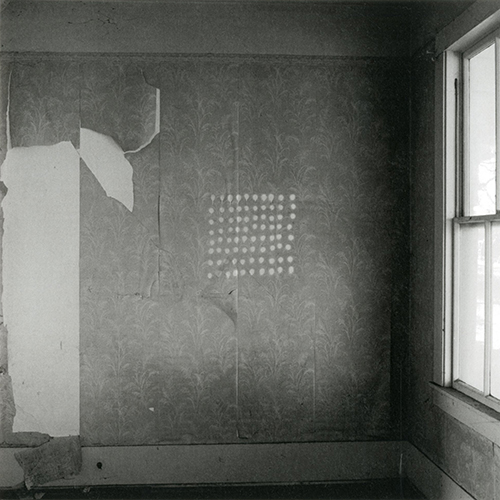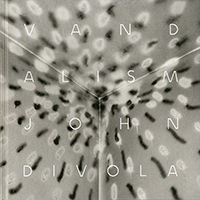| SIMON DENISON IMAGE & TEXT |
| PREVIOUS | NEXT |
VANDALISM John Divola Mack, 2018 ISBN 978-1-912339-00-6 Hb
This book represents a return to publication of John Divola’s influential Vandalism series, made at the very start of his career in 1974–5. The work gained an immediate degree of celebrity, with some images included in John Szarkowski’s Mirrors and Windows exhibition at MoMA in 1978. The series was first published in book form years later – alongside two other related projects from the 1970s, LAX-NAZ (1975–6) and Zuma (1977–8) – in John Divola: Three Acts (Aperture, 2006), but that book has long been out of print. Divola made the images in Vandalism by entering abandoned buildings around Los Angeles, spray-painting patterns on walls, floors and ceilings or setting up makeshift sculptures of cardboard or string, and photographing the results. The process of staging abandoned interiors for the camera has been frequently imitated (and developed) by photographers since, but Divola’s work was ground-breaking in its day. It was one of a number of important projects in which photographer-artists intervened in the world as they found it and explicitly participated in the construction of their often playful images, in what is now recognised as one of the key initiating moves of photographic postmodernism. Other important work in this vein from the period includes, for example, Eleanor Antin’s 100 Boots (1971–3) and John Pfahl’s Altered Landscapes (1974–80). The images in Vandalism are square, black-and-white, formal constructions of planes and lines in which Divola’s interventions are typically centralised. Windows and doors, electrical fittings and bits of old furniture creep in at the edges of several pictures, enriching the formal patterns and evoking the history of human occupation of sites at which Divola’s performances are simply the latest event. The sprayed marks may reference the raw energy of action painting or graffiti, but the photographs have a quality of immersive stillness, with some mournful overtones of time passing, but also an optimistic sense of the reclamation of what has been lost or rejected: not so much vandalism, then, as its opposite. |
 |
|---|---|
 |